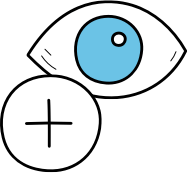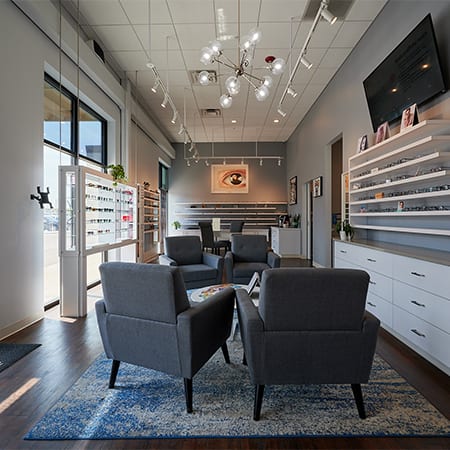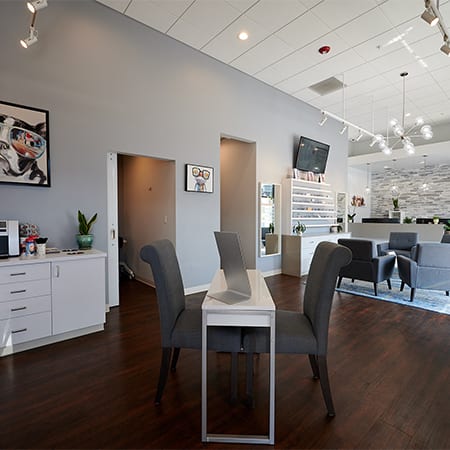Did you know that between 16 million and 49 million Americans have dry eyes? This is between 5-15% of the population!1 Dry eye symptoms are often not harmful at first but if left untreated, they can be uncomfortable and could potentially effect your vision and harm the health of your eyes. Some signs that you might be experiencing dry eyes could include:
- Itching eyes
- Redness
- Feeling like something is in your eyes
- Light sensitivity
- Eye fatigue
- Blurred vision
There are many causes for dry eye symptoms, such as:
- Medications/medical conditions
- Age
- Weather/environmental conditions
- Allergies
- Gender
As we are entering the cold and dry winter months, Coloradans can notice their eyes feel like they are not producing enough tears to keep them properly lubricated. Cold weather is one of the leading causes of dry eyes because there tends to be a drop in humidity. As we are entering the winter months, (or any time of year) here are some tips to keep your eyes feeling their best!
- Avoid places with a lot of air movement
- Turn on a humidifier
- Rest your eyes frequently when doing near tasks
- Stay away from smoke
- Add omega-3 fatty acid to your diet2
If these at-home remedies do not solve the dry eye issue, you could be experiencing chronic dry eye. Chronic dry eye can be alleviated by intervention from your optometrist. Eye doctors can prescribe medications to limit and manage the uncomfortable symptoms of dry eye. If the symptoms are still not going away, there are other options to manage your dry eyes such as:
- Using special contact lenses. Ask your doctor about newer contact lenses designed to help people with dry eyes. Daily disposable contact lenses are often the best choice for patients with dry eye. Some people with severe dry eyes may opt for special contact lenses that protect the surface of the eyes and trap moisture. These are called scleral lenses or bandage lenses.
- Unblocking oil glands. Warm compresses or eye masks used daily can help clear up blocked oil glands. In office procedures to clear blocked glands often help in more severe cases, or in cases where the meibomian glands are atrophied.
- Using light therapy and eyelid massage. A technique called intense-pulsed light therapy followed by massage of the eyelids has proved to help people with moderate to severe dry eyes. This is also helpful with patients who have a condition called ocular rosacea.
- Closing your tear ducts to reduce tear loss. Your doctor may suggest this treatment to keep your tears from leaving your eye too quickly. This can be done by partially or completely closing your tear ducts, which normally serve to drain tears away.
Tear ducts can be plugged with tiny silicone plugs (punctal plugs). These are removable. Or tear ducts can be plugged with a procedure that uses heat. This is a more permanent solution called thermal cautery. - Medications to treat chronic inflammation associated with Dry Eye. Your doctor may prescribe short term or long-term medication to assist in controlling the inflammation. There are many options available.³
During your annual comprehensive eye exam is a great time to discuss dry eye concerns, care and management with your optometrist. The sooner you begin treatment the easier it is to control this condition long-term. If you do not have an optometrist, find one near you here!




















